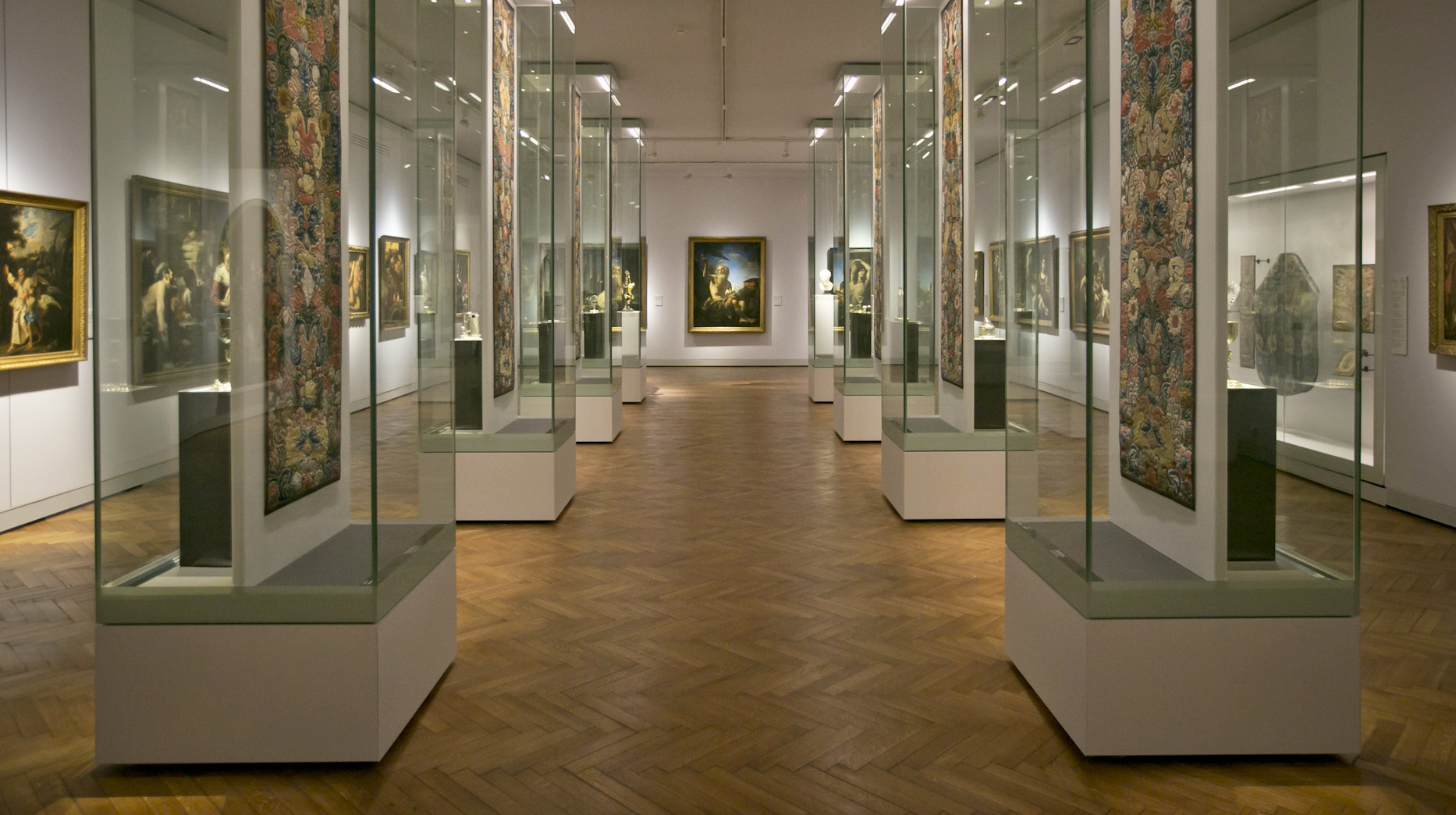
Documents Gallery

Documents Gallery

There are eight entries in the Domesday Book listing the owners of the village in 1086. The above entry describes part of what was owned by William the Conqueror. You can read more about Domesday by clicking HERE.
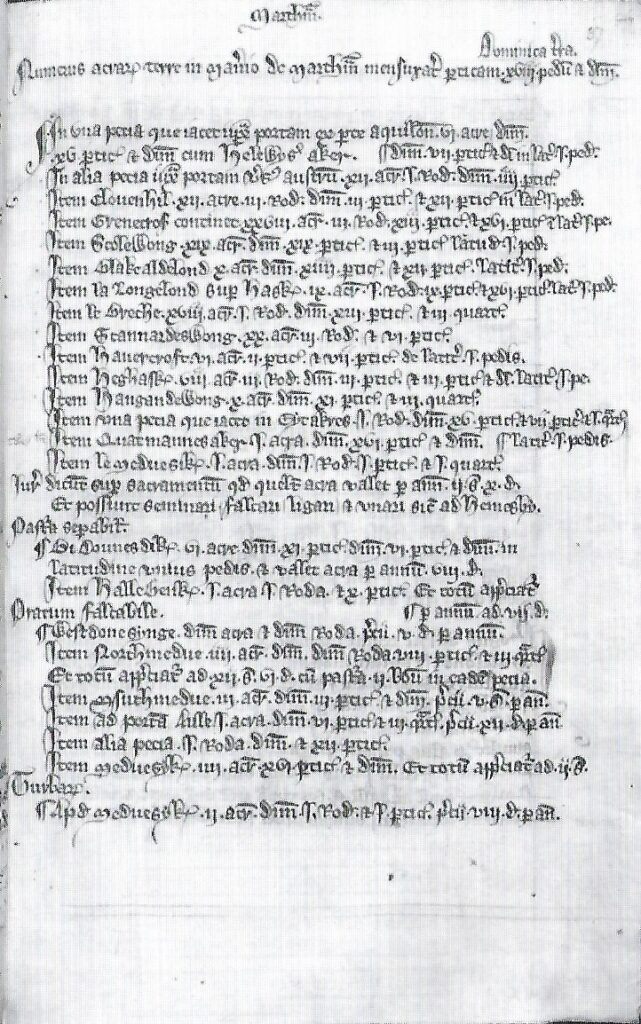
Martham is exceptionally lucky to have a surviving survey that was carried out in 1292 called the Stowe Survey. The survey basically listed the assets of the village 100 years earlier, just after Domesday, and then again as it was in 1272 thus allowing a unique comparison. The page shown on the left is the first page of the survey. The document is held in the British Museum ref:MS 936. You can read more about the Stowe Survey by clicking on its name.

The Reverend Thomas Hitton was said to be a Priest at Martham. He is generally considered to be the first English Protestant martyr of the Reformation. Archbishop Thomas More described Hitton as “the devil’s stinking martyr” and took a personal interest in the case and criticised George Joye for canonising Hitton. You can read more about Rev. Hitton by clicking on his name.
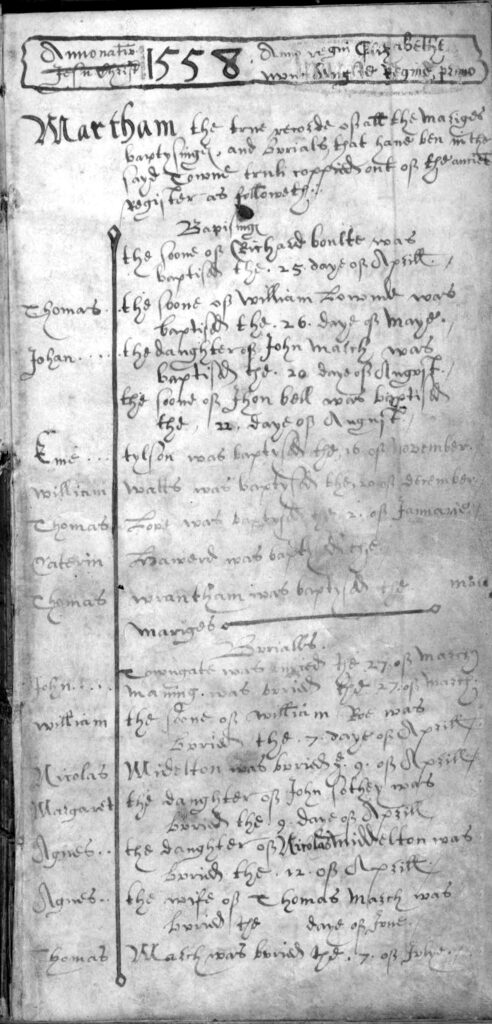
The church Registers of St Mary the Virgin go back to 1558. They are now held at the Norfolk Records Office.
On the left we have the earliest record of burials, whilst on the right is the first page of recorded baptisms.
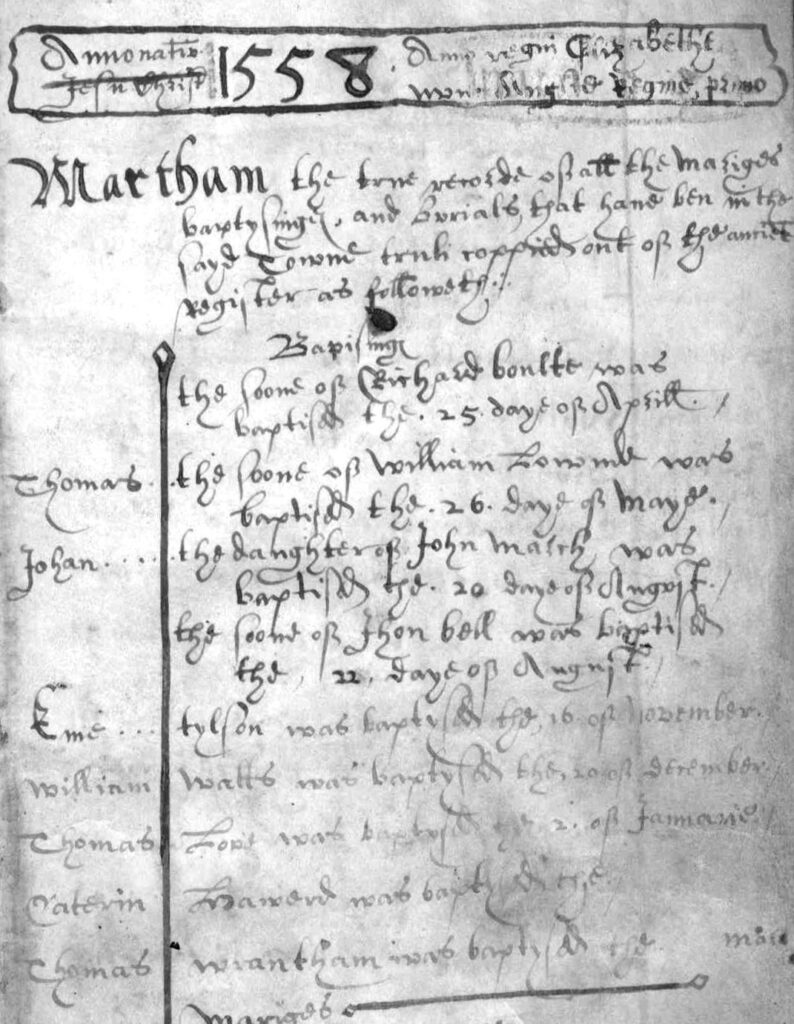
To the right is the newspaper announcement of the village fair to be held in July 1778. You can read more about Martham fairs by clicking HERE.

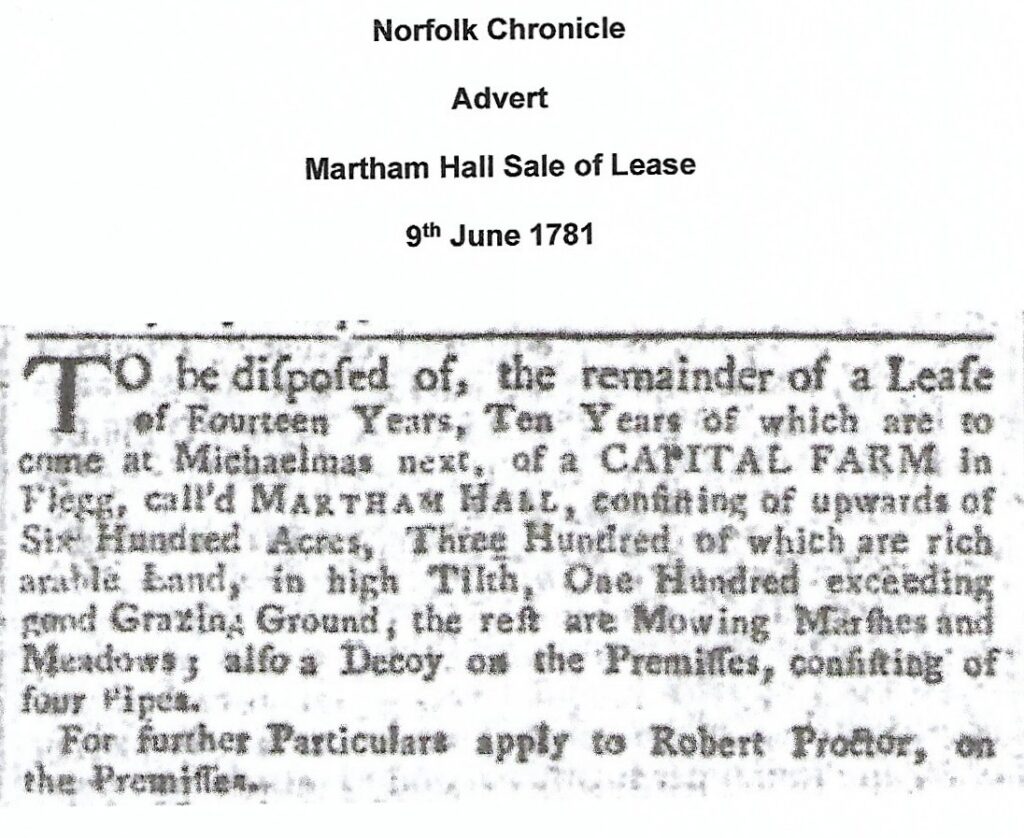
To the left is a newspaper advert of 1781 announcing the sale of Martham House that once stood to the east of White Street. You can read more about Martham House by clicking on its name.
On the right is a copy of the advert offering the lease of The Vicarage for sale in 1798. You can read more about the original Vicarage by clicking on its name.
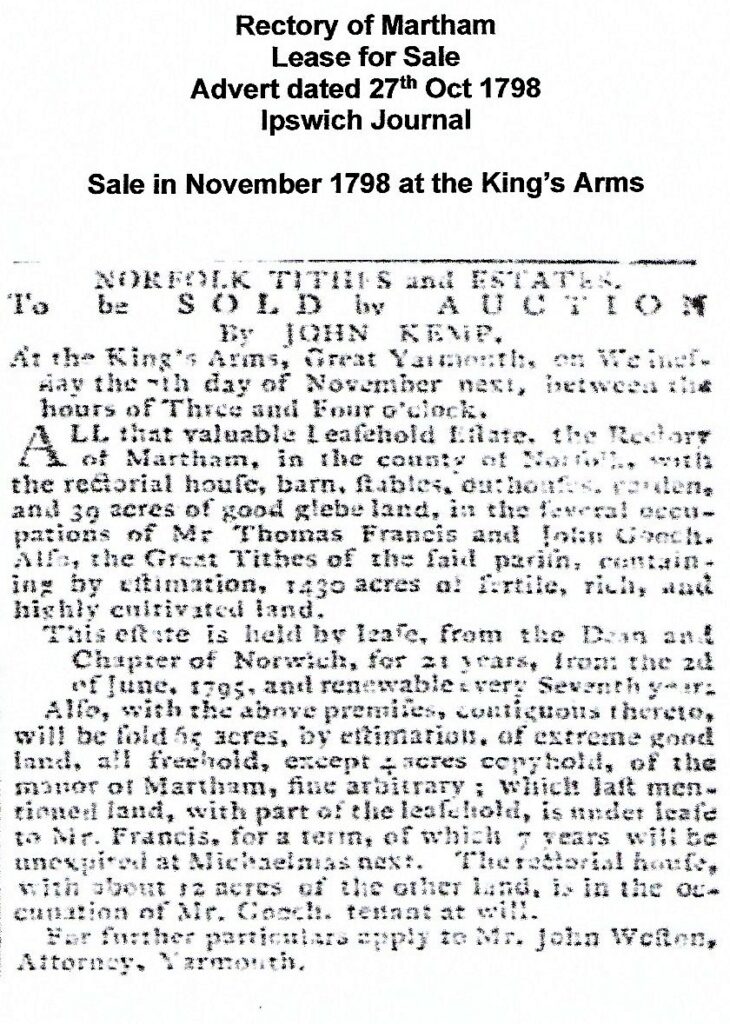
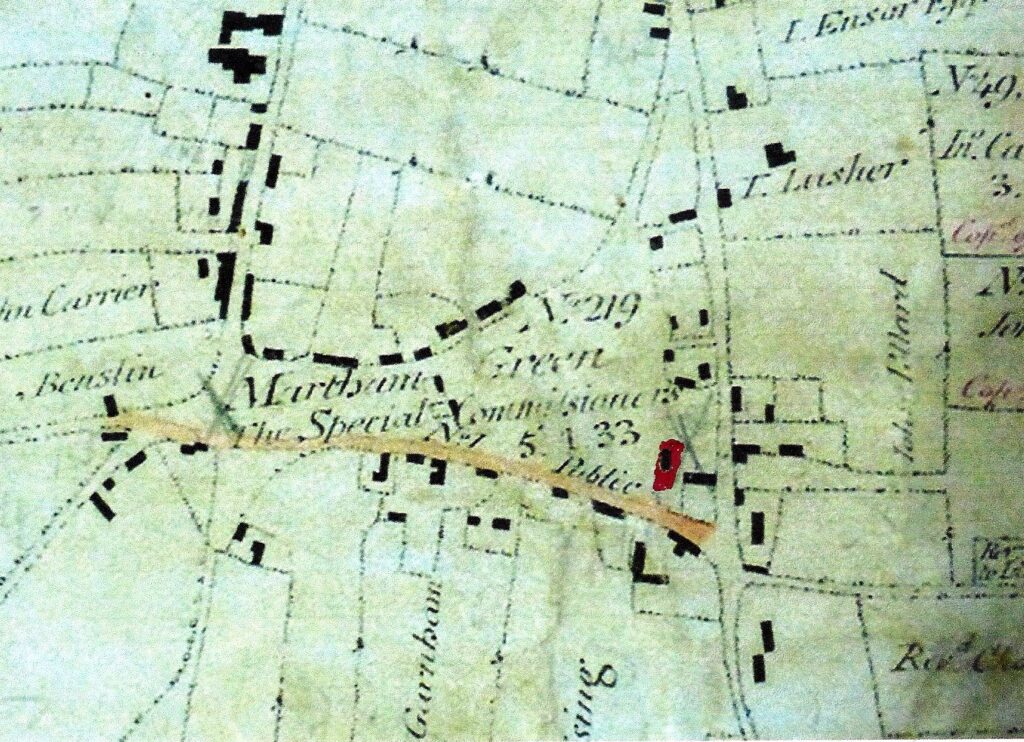
Inclosure was the legal process in England of inclosing small landholdings that had existed since the 13th century into larger farms. Once ‘Inclosed’, use of the land became restricted to the owner and it ceased to be available for communal use. The map that accompanies the Award is the earliest map for Martham that shows the existence of buildings linked to their owners and/or occupiers. It shows ownership of land by individuals, churches, schools and charities, as well as roads, drainage and land boundaries. It was not particularly drawn up to identify properties but does indicate buildings as little black blocks. You can read more about the 1812 Inclosure by clicking on its name.

Robert Porter was the author of a book called “The Strangers Guide Book for the Polite Village of Martham”. The book was published in around 1830. Robert was the village schoolmaster and he wrote most of the book whilst living at The Vicarage although he was never the vicar. On the left is the first elaborate page of the book. You can read more about this illustrated book by clicking HERE. The book is deposited in the Norfolk Records Office in Norwich (Ref: 90/1,2.536).
This is a watch wrapper paper by James Reeve (1840-1916) of Martham. It is part of the collection of the British Museum wrapped around a gold watch they hold. It is described as a small white printed paper glued to a larger cut up bill. Inscribed REEVE Watch & Clock Maker MARTHAM.
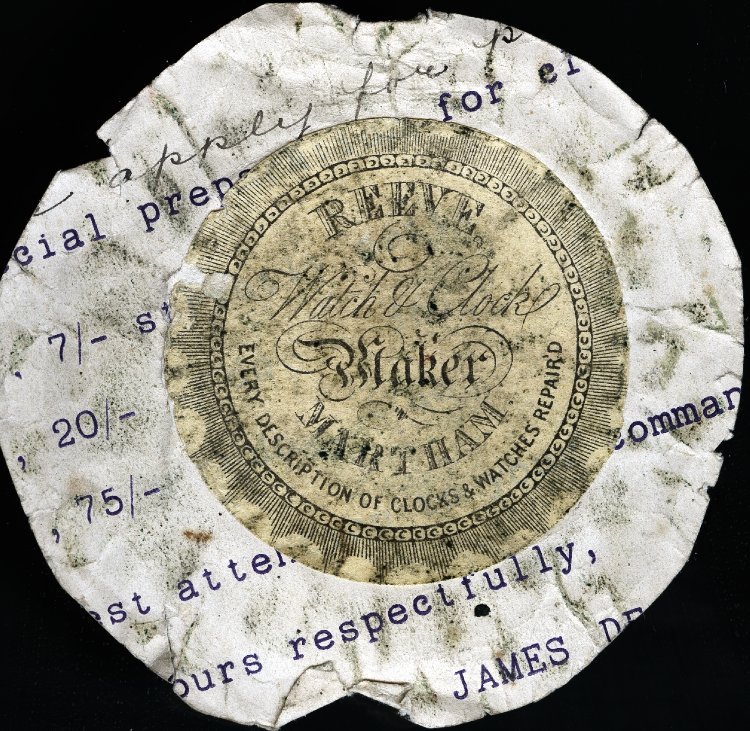
The 1842 Martham Tithe Award was drawn because the Tithe Commutation Act of 1836 required that payments of tithes in the form of farm produce should be replaced by money payments. Tithe was a tax, which was paid to the local church. Tithe maps generally show the boundaries of woods, fields, roads, waterways and buildings. To the right is a copy of a small part of the Award map showing the Village Green. You can read more about the Martham 1842 Tithe Award by clicking on its name.
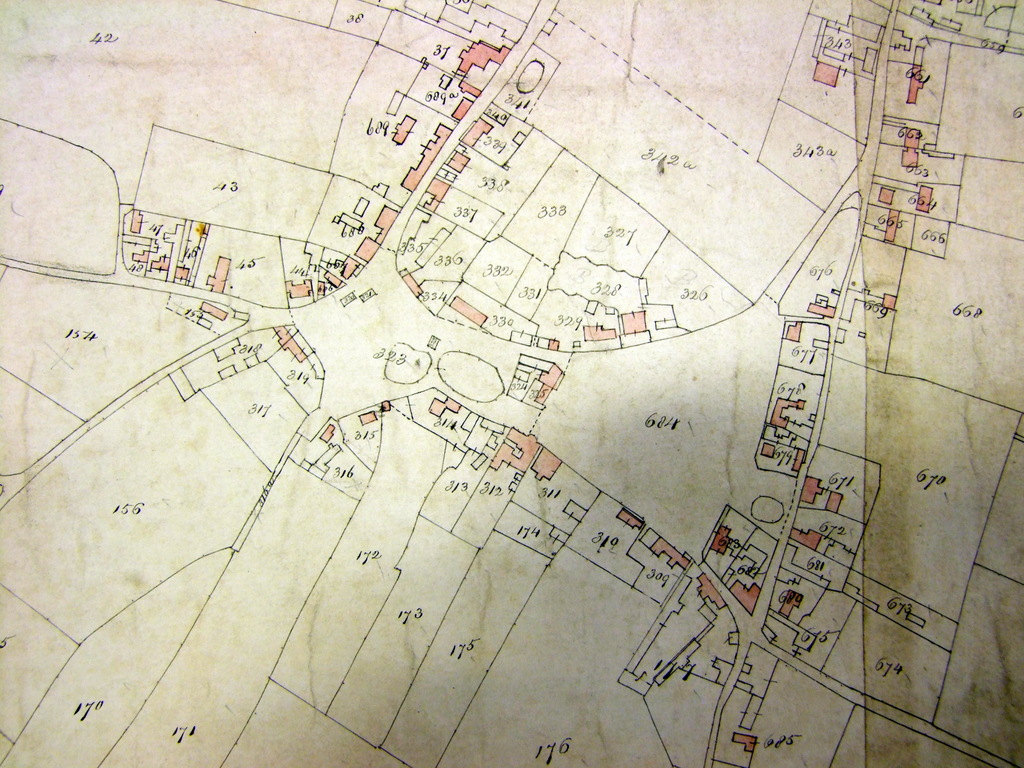
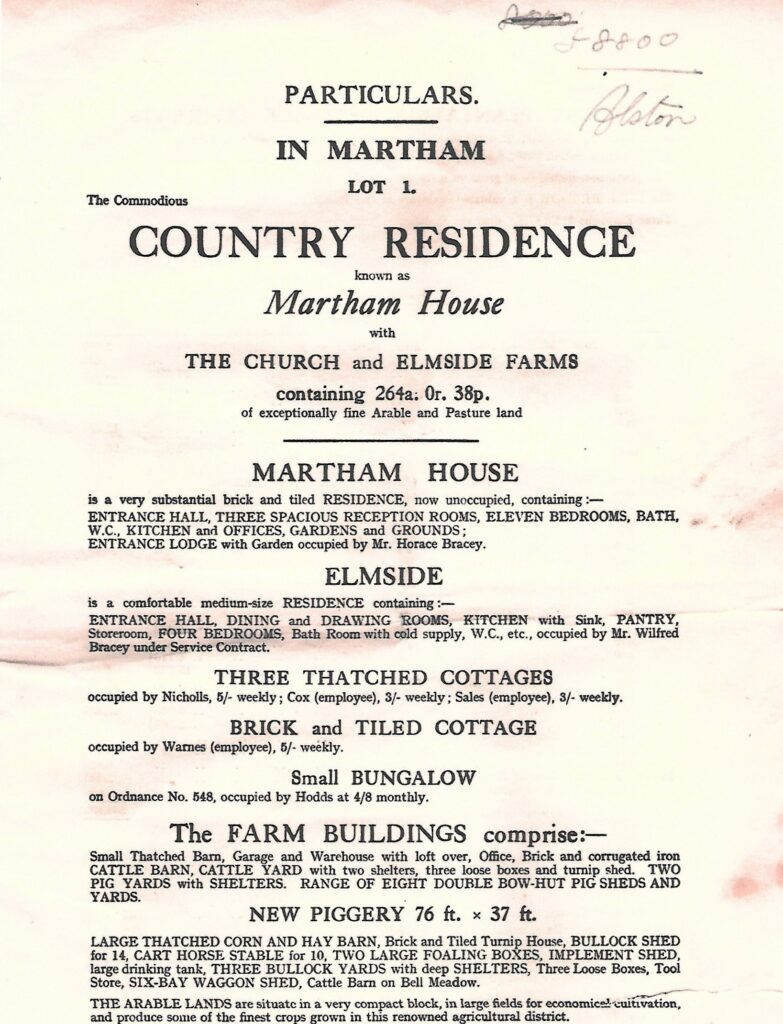
On 17th July 1937 the 950 acre Martham Estate was put up for sale by auction at the Royal Hotel, Norwich. This was the largest farming estate ever to be put up for sale in Martham and basically consisted of Martham House, Elmside House and their associated farmland, barns, cottages and farming machinery etc. On the left is the second page of the auction catalogue giving some of the details. You can read more about Martham House and Elmside by clicking on their names. The buyer was William Alexander Alston of Billockby who paid £8,800.
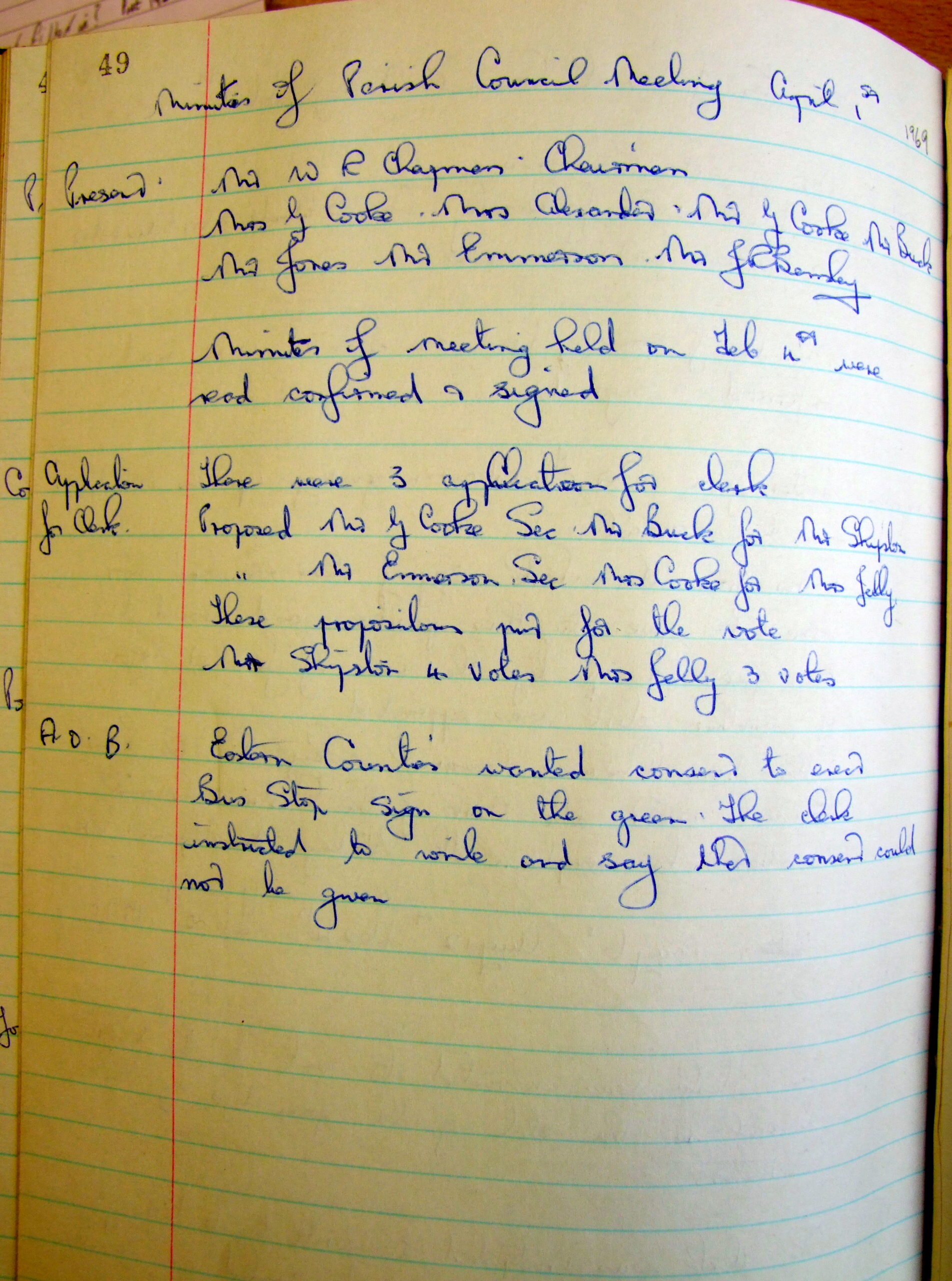
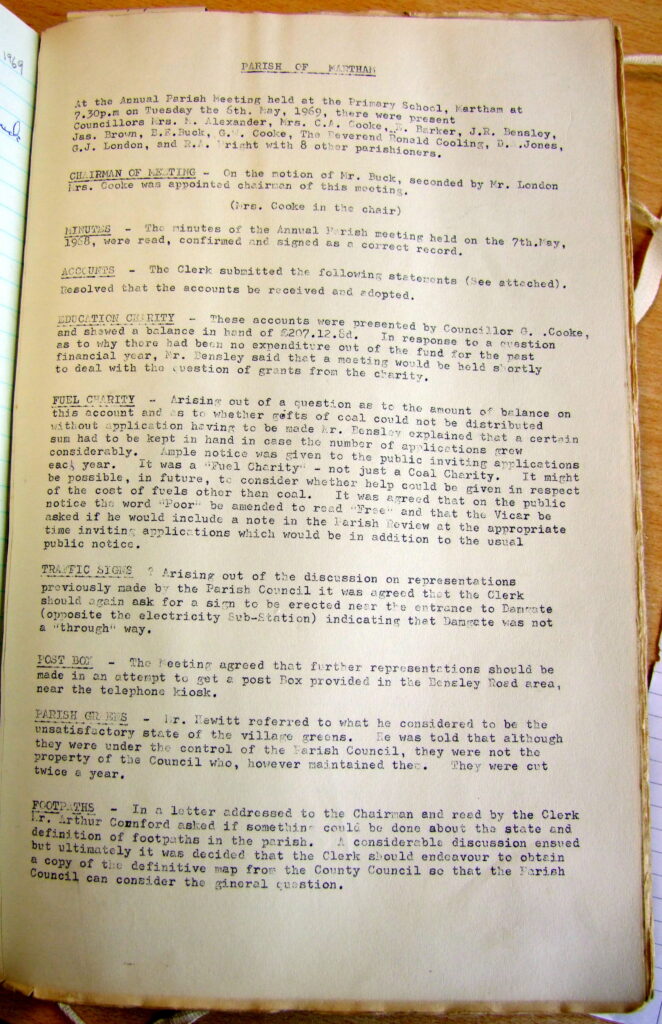
Parish Council Minutes.
The first Parish Council meeting was held in 1895 and the minutes of all the meetings up to 1st April 1969 were hand written. On the left is a copy of those last hand written minutes whilst on the right is a copy of the first typed minutes of the meeting held on 5th June 1969.